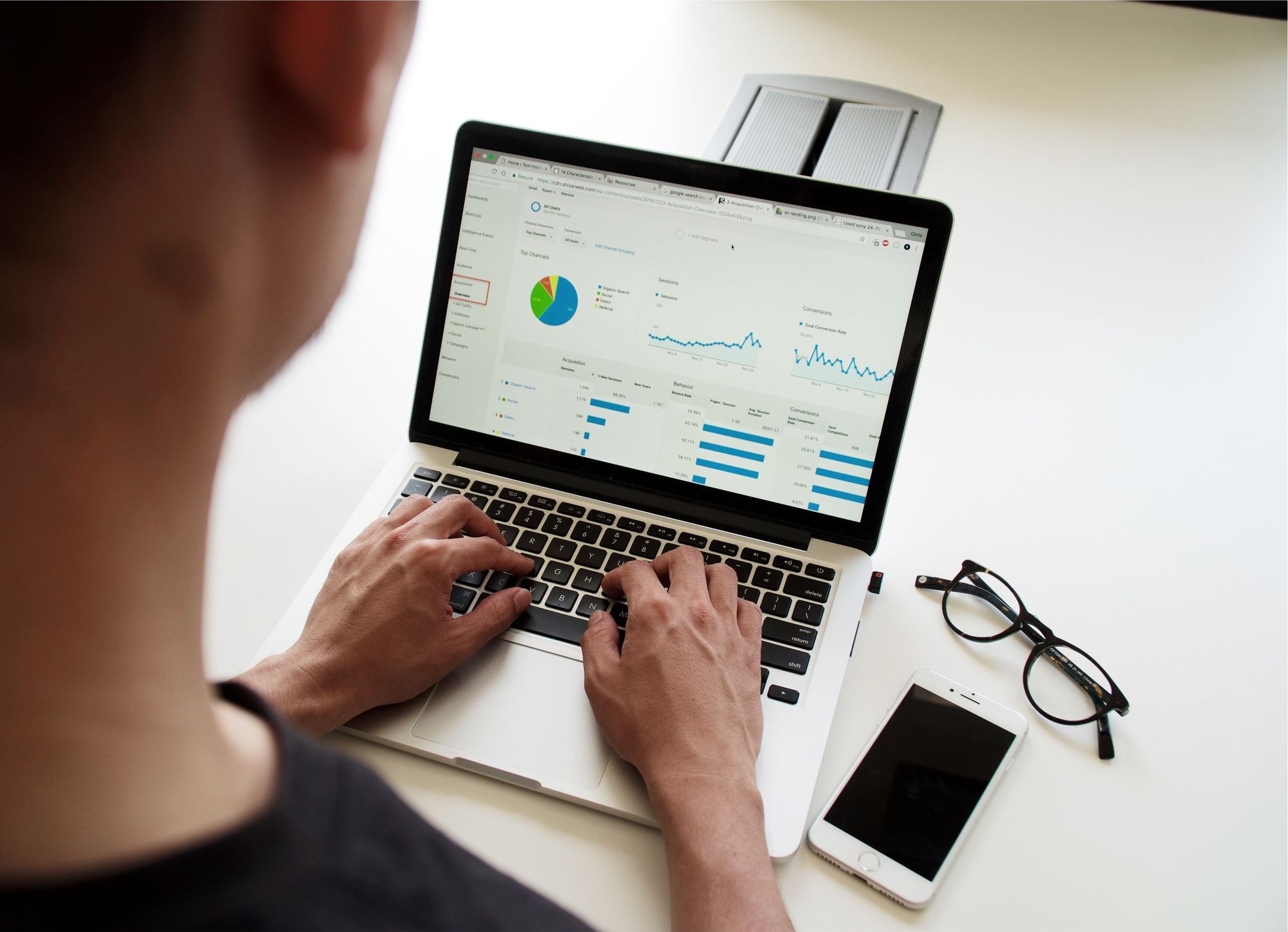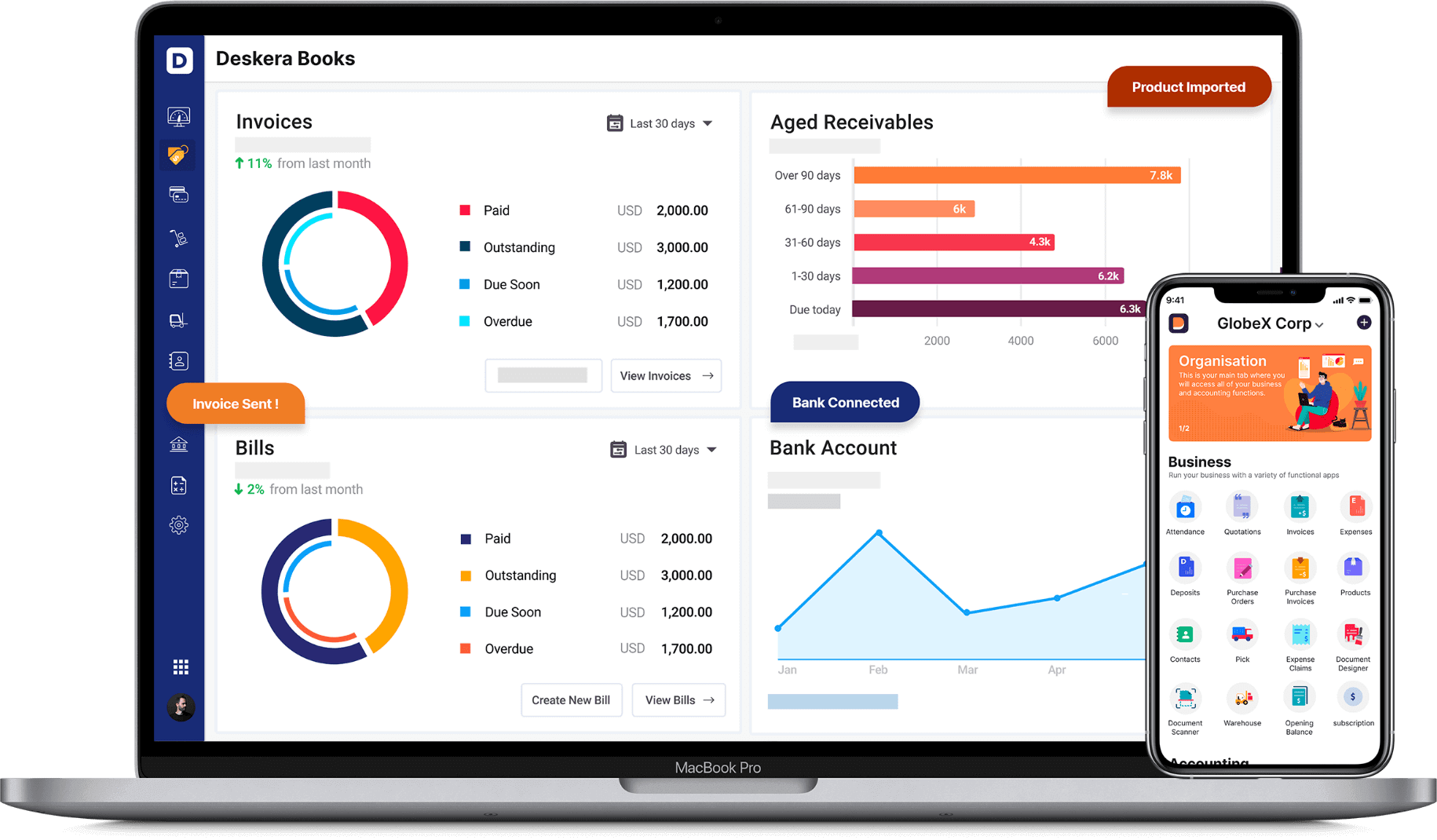You are a sole proprietor, having a new business of customized t-shirts. While it has been three months since you started your business, you are still getting the hang of it. But so far, you think you are doing good, and you are considering expanding your business. Which are the factors that will determine your business’s expansion?

The primary factors that you will be required to consider before expanding your business are:
- Your costs like fixed costs and variable costs
- Your operating expenses and operating income
- Your everyday and monthly cash flow
- Your everyday and monthly revenue and net profit
- Your buyer personas
- Your business environment like competitors, opportunities, threats, etc.
And so on.
Hence, when you are managing your business, some functions are its basis, and tracking your expenses is one such function. There are two main categories of expenses:
- Fixed costs
- Variable costs
Understanding these costs in depth will help you monitor your revenue as well as profitability (revenue - expenses = profit), which is a reflection of how your business is performing and what lies ahead for it.
This article will take you through all that is to know about fixed costs. The topics covered are:
- Fixed Cost Definition
- Understanding Fixed Costs
- Key Features of Fixed Costs
- Advantages of Fixed Costs
- Disadvantages of Fixed Costs
- Fixed Costs Examples
- How to Calculate Fixed Costs?
- How to Calculate Average Fixed Costs?
- Importance of Fixed Costs
- Treatment of Fixed Costs in Accounting
- How Can Deskera Help You With Accounting?
- Key Takeaways
- Related Articles
Fixed Cost Definition
Fixed cost refers to the cost or the expense that does not get affected by any change in the number of units produced or sold over a short period of time.
This hence means that fixed costs are those types of costs that are not dependent on business activity but are rather associated with a period of time. It is an indirect expense that is incurred irrespective of the levels of business activity or even in case of no business activity.
Understanding Fixed Costs
While doing business, it is unavoidable to incur costs. These costs can be demarcated as indirect, direct, and capital costs on the income statement. Remember, any fixed costs on the income statement are to be accounted for on the balance sheet as well as on the cash flow statement.
Depending on the characteristics of the fixed costs, they are either recorded as short-term liabilities or long-term liabilities on the balance sheet. Whereas in the case of the cash flow statement, all the fixed costs paid for in cash are to be recorded.
The total cost incurred by your business is made up of the fixed costs as well as the variable costs and hence play an important role in determining the economies of scale and contribution margin, respectively.
Fixed costs are the base costs involved in the comprehensive operation of the business and are usually established by contract agreements or schedules. Once established, fixed costs remain constant over the life of an agreement or cost schedule.
Fixed costs are allocated to the indirect expense section of the income statement that leads to operating profit. Two of the common fixed costs which are recorded in the indirect expense section are depreciation and salaries for management. As a business owner, you would be required to create a depreciation expense schedule for asset investments with values falling over time.
Therefore, if you are aiming to increase the profitability of your business, you will have to make use of all the opportunities to reduce the fixed cost of your business.
Key Features of Fixed Costs
- Fixed costs are those business expenses that do not depend on the level of goods or services.
- Fixed costs are recurring expenses and need to be paid every month, or on a quarterly basis, or on a yearly basis- as per the agreement.
- Fixed costs can be negotiated for a specific time period and do not change with changes in the production levels.
- Fixed costs can decrease on a per unit basis if they are based on the direct cost portion of the company’s income statement.
- Fixed costs can be established by contract agreements or schedules and thereafter do not change over the life of the agreement.
Advantages of Fixed Costs
- Fixed costs continue to remain constant throughout your business’s production process unless you undertake any major capital expenditure. For example, you have bought and installed a machine to assist in the production of your goods and services. After incurring that expense- a fixed cost, you will be only charging depreciation expense on it every year. This would be charged irrespective of your production levels.
- Considering that fixed costs do not change with changes in the production volume of goods and services, they are easier to account for.
- While fixed costs do not change with changes in the production levels, per unit fixed costs do decrease with an increase in production, hence encouraging your production team to produce more and your sales team to sell more.
- Production output and costs tend to remain the same for a relevant range of output.
- Fixed costs bring a decrease in the net income of the company for a particular accounting period, which leads to reduced tax liability and ultimately an increase in cash savings.
- Cost-intensive industries become natural barriers to new entrants while also eliminating small competitors. In such industries, where fixed costs are higher, new competitors are discouraged from making an entry in the market that you are functioning in, leading to higher revenue and gross profits for you.
Disadvantages of Fixed Costs
- One of the major disadvantages of fixed costs is that there is an increase in the per-unit fixed cost if your company fails to operate at a certain minimum production rate. Hence, if yours is a business with high fixed costs, then a decrease in production or sales volume will have a negative effect on your profit margins.
- If your business is one that has multiple products, then it becomes very tricky for you to find a direct relationship between the product and the fixed costs incurred. In such a scenario, allocation or apportion of cost is done based on the profitability of each division. This, however, can result in wrong financial productivity measurements.
Fixed Cost Examples
There is a vast range of fixed costs that you can incur while running your business. Some of the basic fixed cost examples are:
Rent or Mortgage Payments
Almost all businesses are required to pay rent or mortgage payments for real estate. This amount is not dependent on the performance of your business but rather on the agreement signed. In fact, this amount may increase over a period of time.
Depreciation
The gradual writing off of the cost of tangible assets like production machinery over their useful lives is known as depreciation.
Amortization
Amortization is the gradual writing off of the cost of intangible assets like purchased patents over their useful lives.
Utility Bills
This involves the cost of electricity, gas, phones, trash, sewer services, etc. While some utility bills like electricity bills might increase with the increase in production, utility bills are still taken as fixed costs because your company will have to pay a certain minimum amount irrespective of the output levels.
Salary Payments to Employees
These are the fixed compensation amounts paid to your employees as per the agreement signed with them.
Health Insurance
This is a fixed cost because you will be required to pay insurance premiums to the insurance company as per the contract.
Advertising and Marketing Costs
Advertising and marketing costs include the costs undertaken during marketing campaigns like social media campaigns, website hosting, content marketing, performance marketing, and many more. These are a part of fixed costs because, in cases of expenses like registration of your website domain, you will have to pay small monthly costs that are fixed irrespective of how your business is performing on that website.
Property Tax
These are part of those business taxes that are charged by the local government based on the cost of assets owned by you.
Interest Expense
This is the cost of borrowing and is considered as a fixed cost only if a fixed interest rate is decided in the loan agreement.
How to Calculate Fixed Costs?
As fixed costs are those costs that need to be paid regardless of the level of business activity, it is very important to calculate fixed costs. Depending on which approach you take for tracking your expenses, the method of calculating your fixed costs will get determined. The two ways through which you can calculate fixed costs are:
Calculating Fixed Costs Using Multiple Fixed Costs
To calculate fixed costs using this method, you will need to add all the expenses that are categorized as fixed costs. The formula would be:
Total Fixed Cost = F1 + F2 + F3 + F4 + F5 + ….
Wherein Fn is an independent fixed cost.
For example, you have a t-shirt business and all your expenses for the month are as follows:
You will need to categorize and divide these expenses into two categories- fixed costs and variable costs. Here, our fixed costs are rent, salary, equipment, and website hosting. Following the formula to calculate the total fixed costs,
Total Fixed Costs = $20,000 + $10,000 + $4,000 + $1,500 = $35,500
This formula is suitable for use when your business, through its bookkeeper, is maintaining a detailed list of expenses. However, even after proper financial reports are maintained, how accurately you are able to determine fixed costs is also important. You will have to make sure not to skip even a single value of fixed cost. However, if this method is not possible for you or is too time-consuming, in that case, you should follow this next formula.
Calculating Fixed Costs Using Variable Costs
If yours is one of those businesses that records only total costs and variable costs per unit, then this method for calculating fixed costs is for you. Considering that the sum of fixed costs and variable costs gives total cost, usage of this formula is reliant on these three factors:
- You should know your variable cost of production per unit
- You should know the number of units produced by your business
- You should know the total production cost
Only after you know these three factors will you be able to calculate your fixed costs. The formula for the same is:
Fixed Cost = Total Cost - (Variable Cost Per Unit x Units Produced)
Using the same example as before, if you know that your total cost is $59,500, your variable cost per unit is $0.60 per cookie, and you have made 40,000 cookies this month, then as per the formula,
Fixed Cost = $59,500 - ($0.60 x 40,000) = $35,500.
The answer of fixed cost that you got through this formula is the same as the one that you got through the previous formula.
How to Calculate Average Fixed Costs?
Knowing the total fixed costs of your business will help you with budgeting and pricing. This is especially so if you are able to calculate the average fixed cost, which is the fixed cost per unit.
Average fixed cost is an amount that is incurred to produce a unit or a service irrespective of how many of them are sold. It is because of this that average fixed costs are important and beneficial for the pricing of your goods and services. Once you know the fixed costs for producing your product or service, even before you have added your variable costs to it, you would know the consistent expense incurred by you and, therefore, the starting price for your goods and services.
The formula for calculating average fixed costs is:
Average Fixed Costs = Total Fixed Cost/ Units Produced
Continuing the same example as earlier, where the total fixed cost was $35,500 and units produced were 40,000,
Average Fixed Cost = $35,500/40,000 = $0.89
Consider now that your average fixed cost per unit t-shirt is $0.89 and variable cost per unit t-shirt is $0.60. The total of both is $1.49. Hence, if you want to make a profit, you now know that your retail price will have to be greater than $1.49 per t-shirt. These costs will hence help you with sales pricing.
Additionally, average fixed cost will also give you insights on how to increase profit through increased production and sales. This is because with more units that you produce and sell, your fixed cost per unit will decrease, and you will be able to avail the benefits of economies of scale.
Importance of Fixed Costs
While knowing your variable costs are important, knowing your fixed costs with it is also essential because:
Break-Even Analysis
It is crucial to know the profitable price level for your products and services, for only then would your business be sustainable while also fulfilling its goals and objectives. In order to know this profitable price level, you would need to perform a break-even analysis (i.e., the price at which revenue earned by you is equal to the costs incurred by you).
Break Even Units = Fixed Costs/ (Price - Variable Costs)
This equation hence gives you important pricing information and can further be modified to get answers to your other important questions like the feasibility of a planned expansion or purchase of a new machine.
This equation also gives entrepreneurs considering buying small businesses useful information about projected profits. Lastly, you would also come to know the number of units and revenue needed in order to make a profit.
Economies of Scale
With a deeper understanding of your fixed costs and variable costs, you would also be able to identify economies of scale for your business. The concept of economies of scale is based on the advantage that with an increase in output produced, your fixed costs will get divided over a larger number of items, hence leading to a decrease in fixed cost per unit but a simultaneous increase in the profits.
Treatment of Fixed Costs in Accounting
In accounting, fixed costs are associated with the basic operating and overhead costs of a business. You will have to consider fixed costs as indirect costs of production. This means that they are not those costs that are incurred directly by production processes like needing certain parts for the assembling of the product. However, fixed costs are to be factored in the total production costs, which also results in them being depreciated over a period of time rather than being expensed.
How Can Deskera Help You With Accounting?
Deskera is that bundle of software that is dedicated to helping you meet all your needs and solve all your challenges. When your needs and challenges are in the area of accounting, it is Deskera Books that will be your savior.
This is because Deskera Books is an online accounting, invoicing, and inventory software that facilitates the creation of invoices, tracking of account receivables and account payables, financial KPIs, credit notes, and debit notes, and even getting a real-time view of all your financial statements.

Deskera Books has another highlighting feature wherein it lets you track and manage your orders and sales from the beginning till the end, i.e., from creating their estimates to creating their invoices upon order confirmation. Additionally, you would even be able to receive and automatically record your online payments through its dashboard. Simultaneously, you would even be able to track the cost of goods sold.
One of the other advantages of Deskera Books is that it also maintains exchange rates for over 110 currencies, allowing you to create your invoices and bills in multiple currencies while also getting a forex gain/loss report.
While you focus on quotations, invoices, receipts, payments, and selling your products, Deskera Books will take care of all your accounting needed for reporting and compliance for you. It even comes with pre-configured accounting rules, tax codes, invoice templates, and charts of accounts, among other things, to make this easier.
Lastly, you would also be able to assess all your reports- be it a profit and loss statement, bank reconciliation statement, balance sheet, trial balance, or any other relevant report from your laptop and your mobile phone. Your accountant can also access all of these once you have invited them through their email address.
Key Takeaways
Fixed cost is that cost that is dependent on time but not on the activity levels of your business. However, a higher volume of production, as well as sales, does result in better absorption of the fixed costs, which ultimately leads to an increase in your profits.
Fixed costs play a direct determining role in the profitability of your business, which is where break-even analysis and economies of scale come into play. In fact, to better ensure the success of your business and each of its operations, it is crucial for you to understand the difference between fixed costs and variable costs.
Some of the ways in which you can reduce your fixed costs are:
- Going paperless
- Finding a perfect working space for your business
- Reducing communication costs
- Finding equally effective but less expensive ways of marketing
- Outsourcing a few activities (if beneficial)
- Cancel all the unused services, memberships, and subscriptions
- Find better suppliers
- Consider using open source or cloud-based solutions
The two ways in which you can calculate fixed costs are:
- Using multiple fixed costs
- Using variable costs
To conclude, I would like to say that keeping a close eye on your fixed costs is vital, and this is where accounting software like Deskera Books would be of assistance to you.
Related Articles













